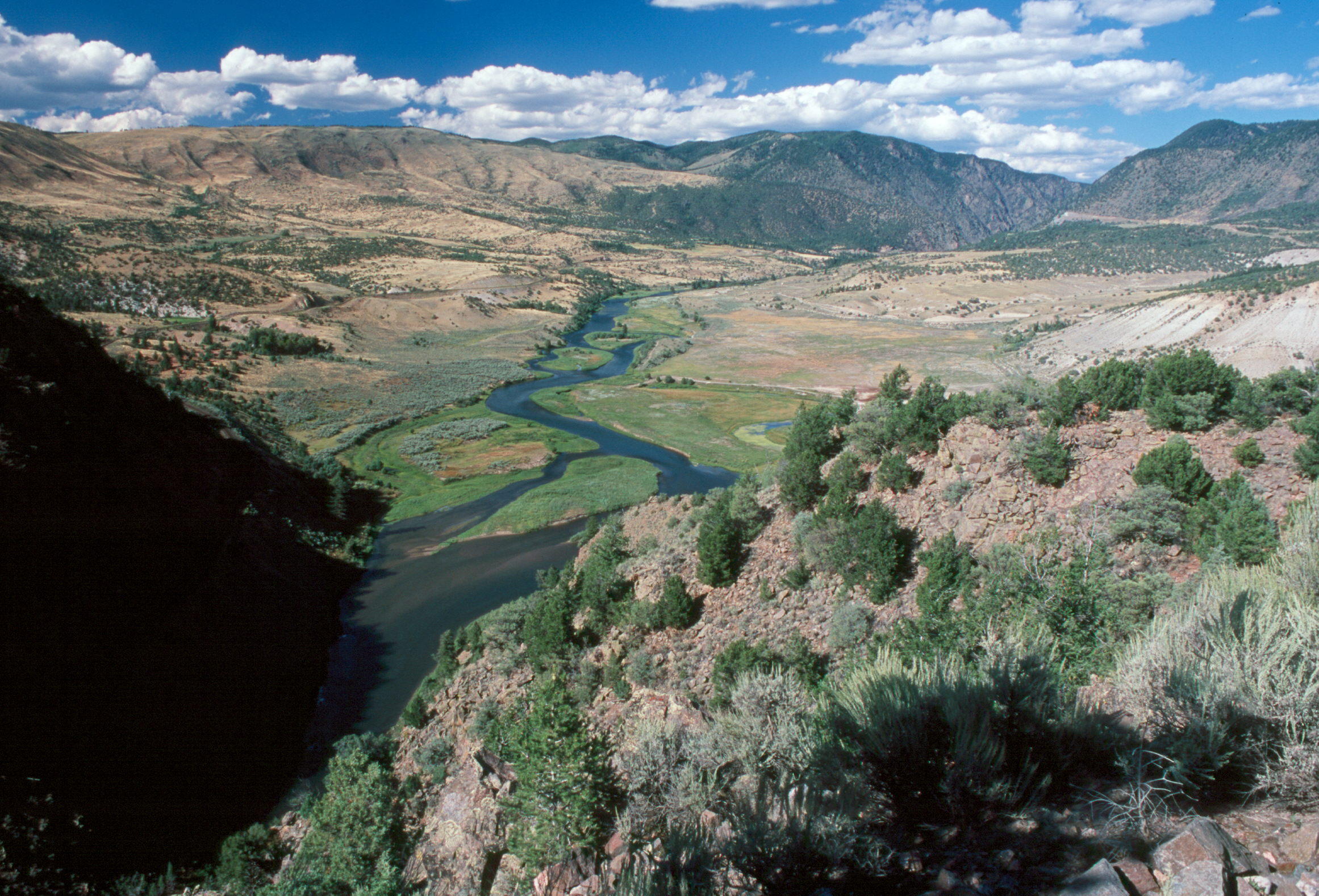Building partnerships for the Colorado River's future
More than half of the Colorado River headwaters is drawn across the Continental Divide to supply water to cities and farms on the eastern slope, leading to declining fish and macroinvertebrate populations - and new projects are poised to take more. Yet after a long-standing dispute over Denver Water’s proposed Moffat Collection System Project (Moffat Project) and Northern Water's proposed Windy Gap Firming Project (WGFP), something unexpected happened. Conservation and west slope interests including Trout Unlimited and Grand County were able to find common ground with Denver and Northern on an innovative program called "Learning by Doing" through which the water projects can proceed while providing restoration funds, streamflow commitments, and new collaborations to actually improve the health of the river. Former adversaries have become partners jointly committed to benefiting the Colorado headwaters.
Mitigation and enhancement agreements for the two projects will provide millions of dollars for habitat restoration projects; provide water instream at key times of the year to address high stream temperatures and low flows; and build a bypass to reconnect the Colorado River around the current Windy Gap Reservoir. Partnership efforts have already begun - the first habitat improvement project was completed in fall 2017 on the Fraser Flats reach. State fish sampling indicates that the project led to a 400% increase in brown trout biomass!
Improved habitat on the Fraser Flats reach.
Moffat agreement - what's in it for the river?
In conjunction with its Moffat Project, Denver Water has committed to several mitigation and enhancement measures including:
(1) Addressing stream temperature issues:
- Monitor stream temperatures and bypass up to 250 AF of water annually if stream temperatures reach or exceed state standards
- Bypass sufficient additional flows to reach defined minimum flows if stream temperature problem persists after the 250 AF have been bypassed
- If temperature problems persist, contribute $1 million for additional projects to help reduce temperatures (such as riparian re-vegetation and channel improvements)
(2) Addressing sediment/flushing flow issues:
- Using flexibility in Denver’s system operations, work to provide flushing flows as recommended under Grand County’s Stream Management Plan
- Operate and maintain sediment pond that catches highway traction sand
- If sediment problems persist, contribute $1 million for additional projects to help reduce sedimentation (such as channel improvements)
(3) Funding $4.5 million in fish habitat restoration projects in the Fraser basin, $2 million for improvements on the Colorado River, and $2 million for water quality projects
(4) Providing 1000 acre-feet of water in additional bypasses from Denver's Fraser basin diversions to bolster Fraser flows at key times; plus another 1000 acre-feet from Williams Fork reservoir for the benefit of the Colorado River
(5) Agreeing to deliver water to the Shoshone Hydropower Plant in Glenwood Canyon - even if it goes down - so that winter flows in the Upper Colorado River are maintained
(6) Participating in the Learning by Doing partnership to monitor river conditions and adjust how mitigation and enhancement resources are applied as needed through "adaptive management."
WINDY GAP FIRMING PROJECT - WHAT'S IN IT FOR THE RIVER?
In conjunction with the WGFP, Northern Water has made mitigation and enhancement commitments including:
(1) Stopping project diversions when needed to prevent stream temperatures from exceeding state water quality standards.
(2) Increasing its current Windy Gap flushing flow commitments, to ensure at least 600 cfs every three years and 1200 cfs every five years.
(3) Partnering to build - including contributing $2 million toward construction - of the Windy Gap Bypass to reconnect the Colorado River around Windy Gap Reservoir and re-establish a mile of river habitat - a measure that state studies have indicated is essential to restoring the Upper Colorado River's health.
(4) Contributing $4 million toward river habitat restoration on the Colorado River below Windy Gap.
(5) Agreeing to deliver water to the Shoshone Hydropower Plant in Glenwood Canyon - even if it goes down - so that winter flows in the Upper Colorado River are maintained
(6) Participating in the Learning by Doing partnership to monitor river conditions and adjust how mitigation and enhancement resources are applied as needed through "adaptive management."
Conceptual image of the Windy Gap bypass reconnecting the Colorado River.
The Colorado River near Pumphouse
A "WILD AND SCENIC" COLORADO RIVER?
The reach of the Colorado River below Kremmling was also being considered as suitable for federal "wild and scenic" river designation, which requires an act of Congress. Many of the same partners who are collaborating on "Learning by Doing" are also working on a locally-based alternative for river protection. The partners achieved a milestone in 2013 by securing instream flow water rights for the river from the Blue River confluence to the Eagle River confluence, for flows ranging from 500 cfs to 900 cfs - at the time, the largest instream flow right ever decreed in Colorado. Partners continue to collaborate on efforts to continue to protect this unique reach of river and its outstandingly remarkable values.






